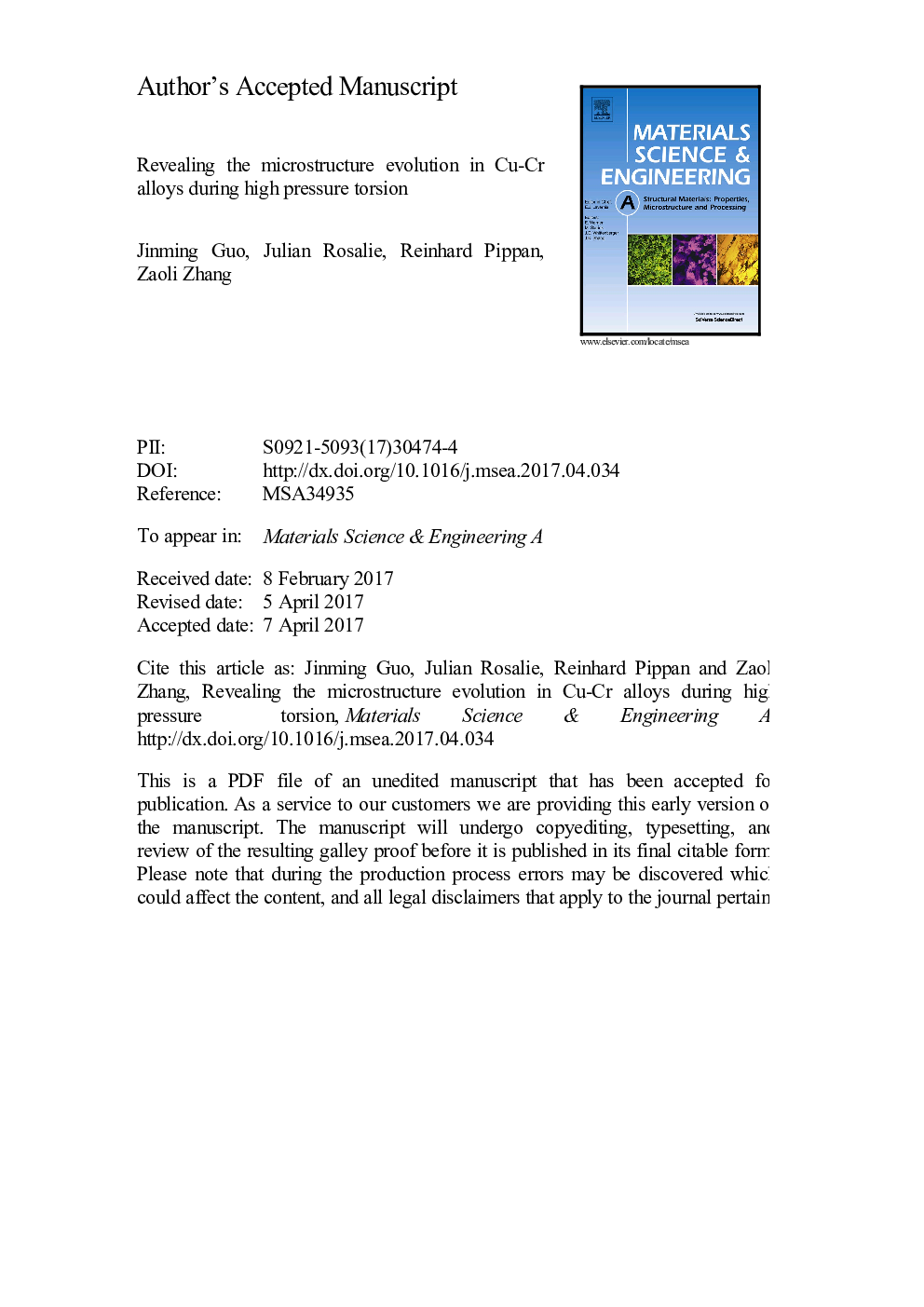| Article ID | Journal | Published Year | Pages | File Type |
|---|---|---|---|---|
| 5455732 | Materials Science and Engineering: A | 2017 | 31 Pages |
Abstract
Usually immiscible Cu-Cr compounds in equilibrium condition were mechanically processed via high pressure torsion with large and controlled strains. A systematical investigation on 57Â wt%Cu â 43Â wt%Cr was carried out to get insights into the microstructural evolution of Cu-Cr nanocomposites and their dissolution process, as well as to determine the solid solubility limit of Cu and Cr elements under severe deformation. Microstructural evolution was captured with grain refinement from micron-size down to less than 20Â nm as the increase of strains. A strain-saturated state in 57Â wt%Cu â 43Â wt%Cr bulk was achieved after 100 rotations deformation (effective strain 1360), with a stable grain size of 13.7Â nm and invariable hardness of 480-495 HV. Fine scanning of X-ray diffraction and sub-nanometer scale measurements of energy-dispersive X-ray spectroscopy showed that 32Â wt% Cu could be fully dissolved into Cr matrix, and conversely solubility of Cr in Cu was determined to be about 3Â wt% after an enough amount of deformation. The phase fraction change associated with Cu dissolution into Cr matrix during continuous deformation was captured and accurately calculated, indicating a negative exponential phase change mode. A phenomenological intermixing mechanism based on the kinetic competition between external forcing mixing and thermal-diffusion induced decomposition was proposed, which was well accordant with the phase evolution observed from experimental results.
Related Topics
Physical Sciences and Engineering
Materials Science
Materials Science (General)
Authors
Jinming Guo, Julian M. Rosalie, Reinhard Pippan, Zaoli Zhang,
